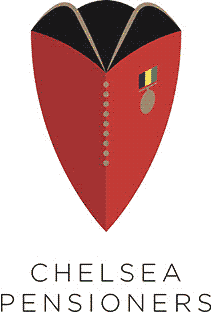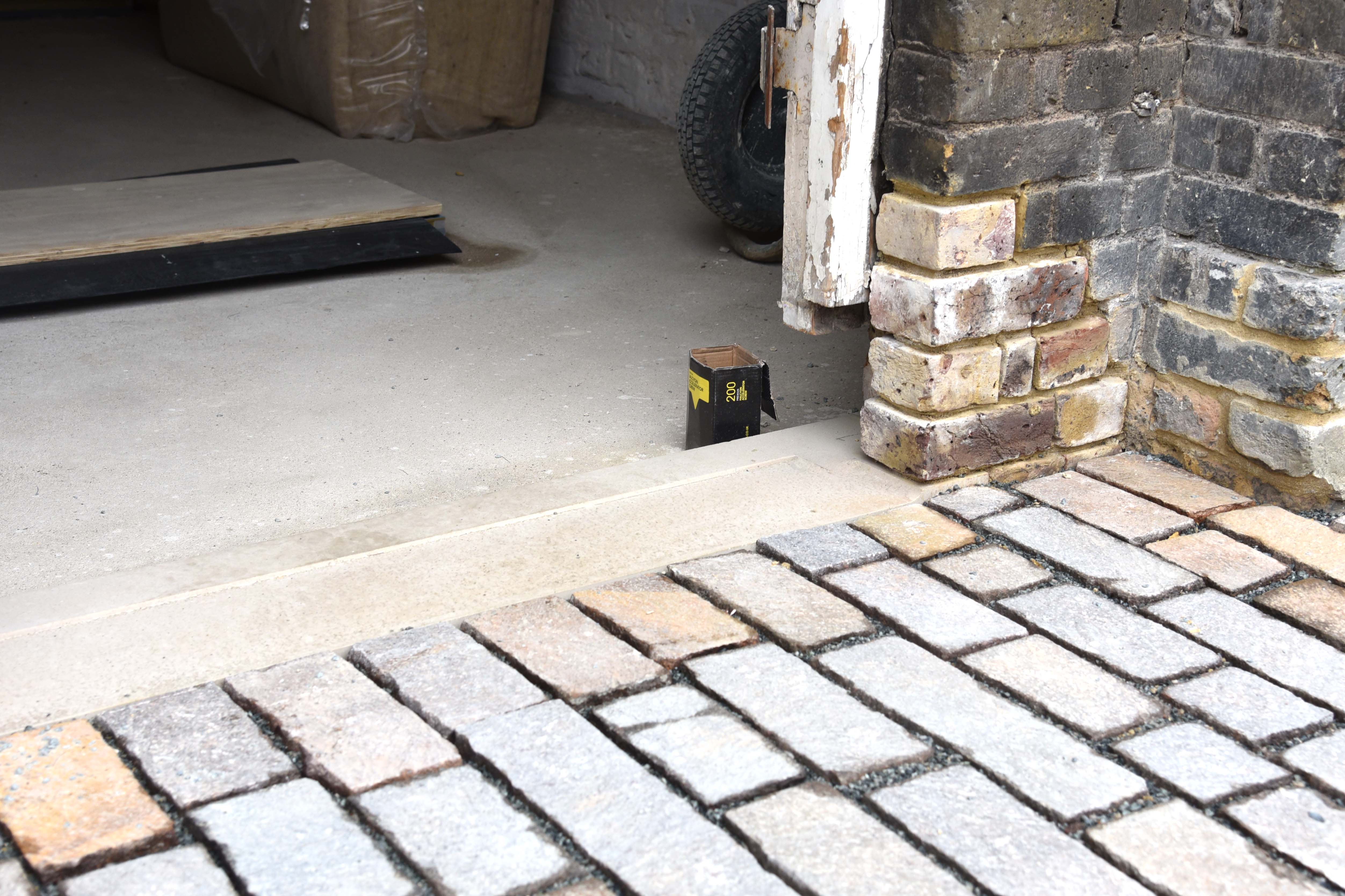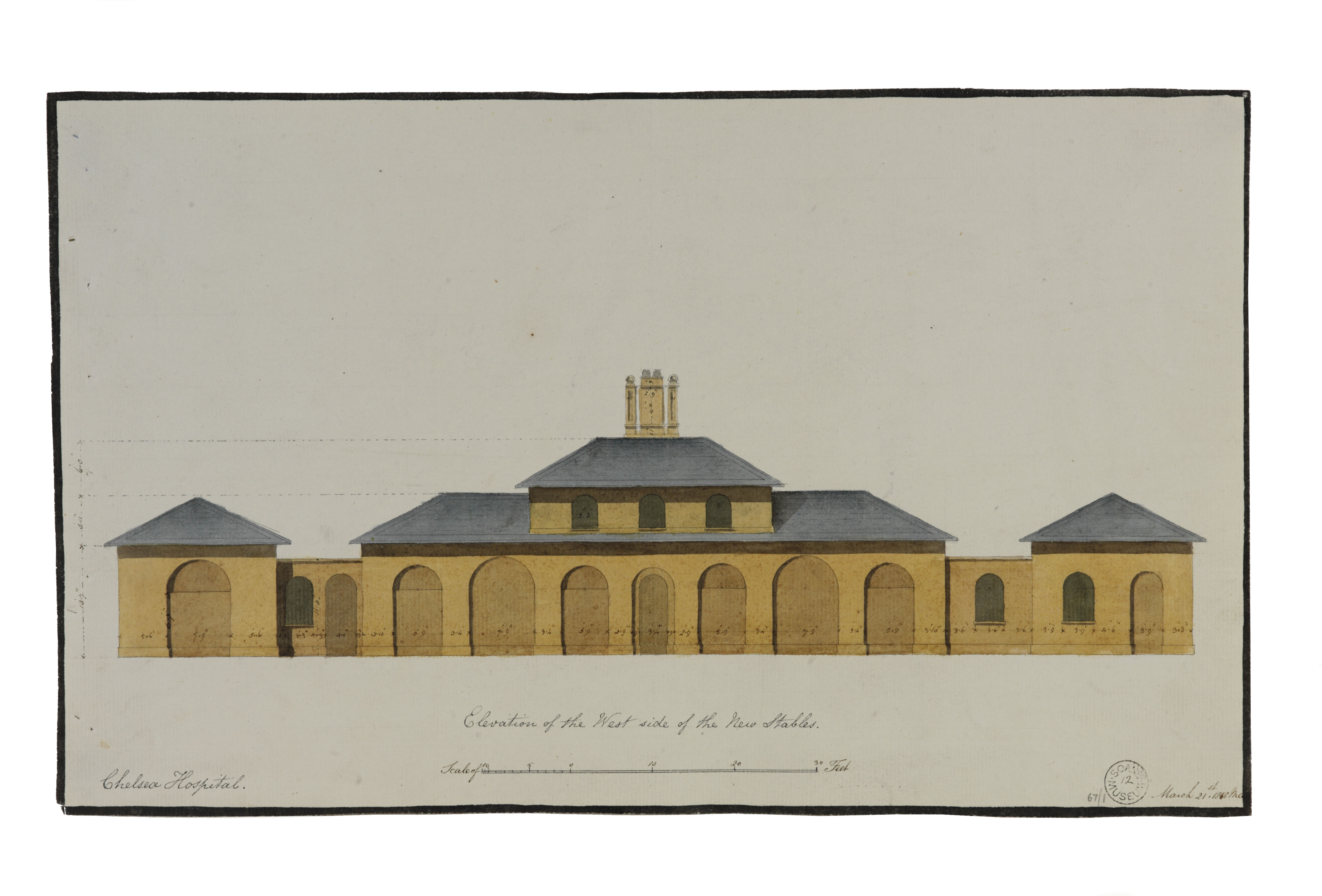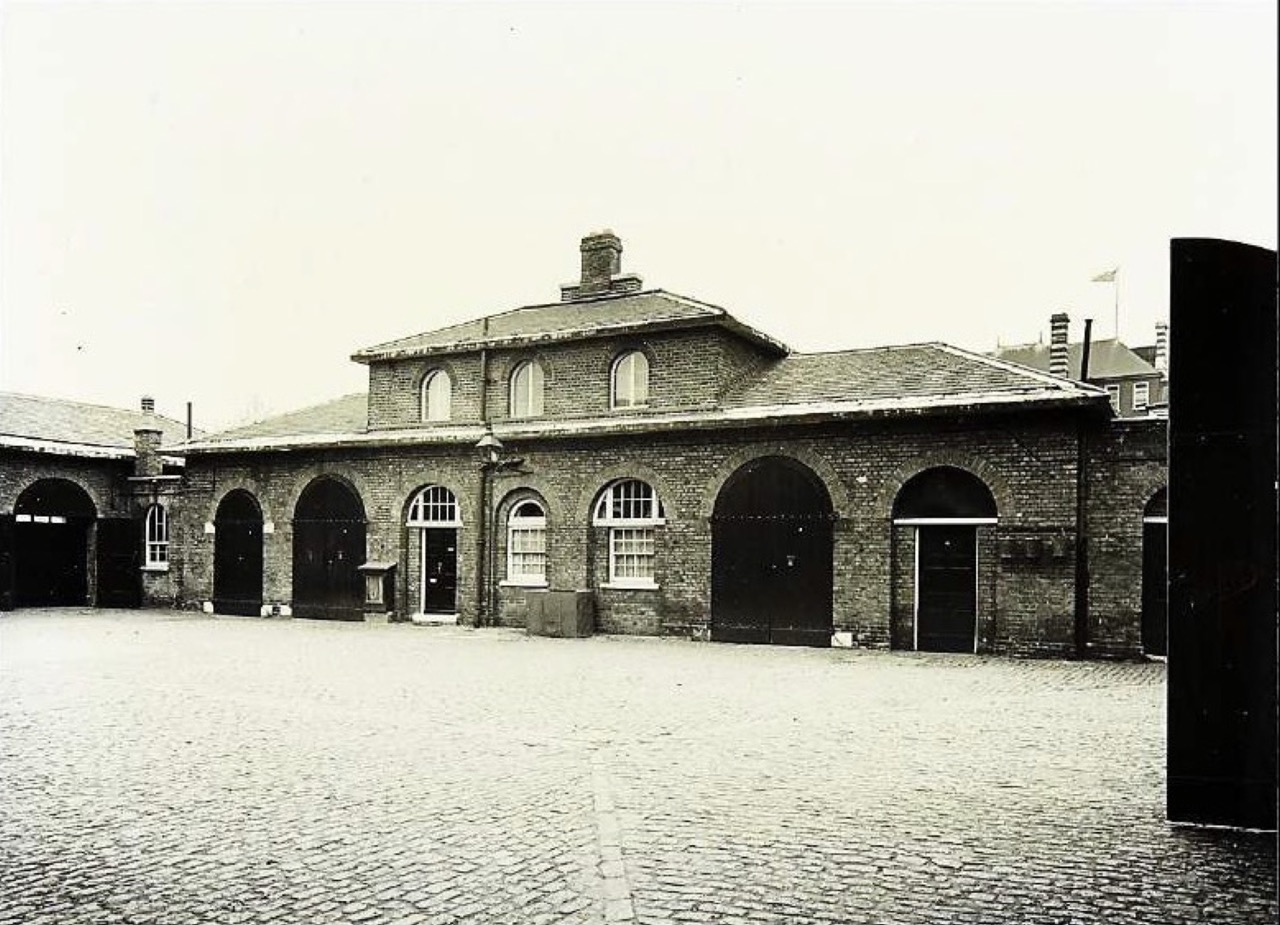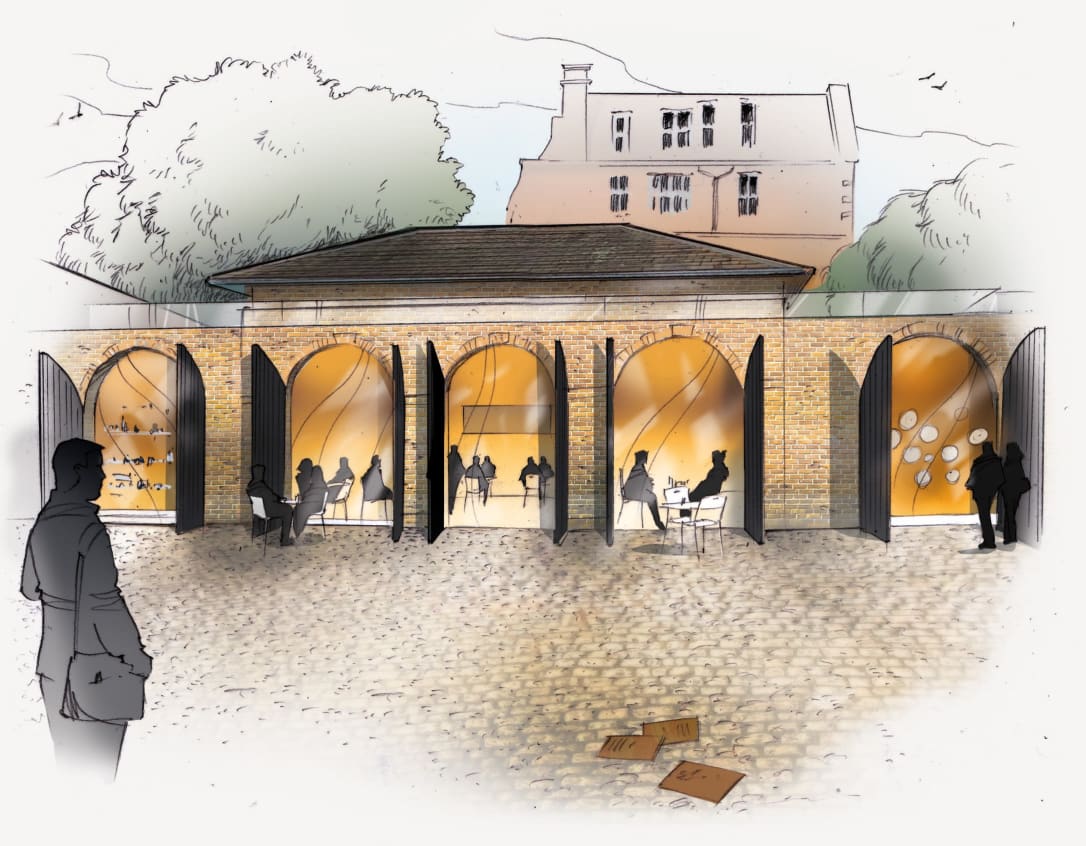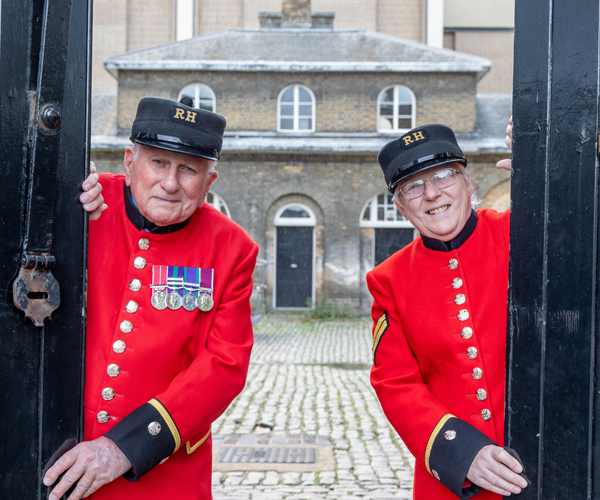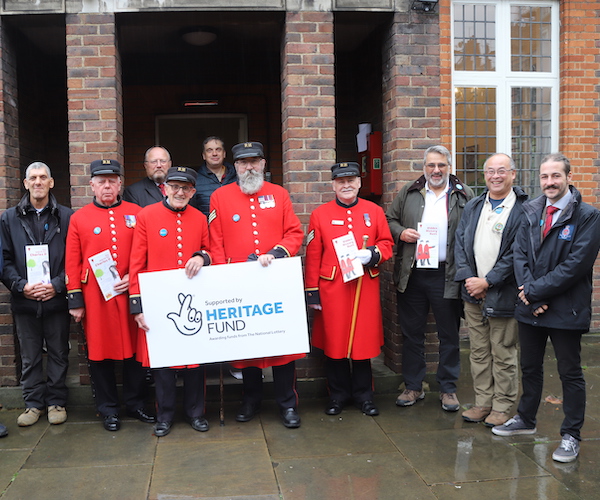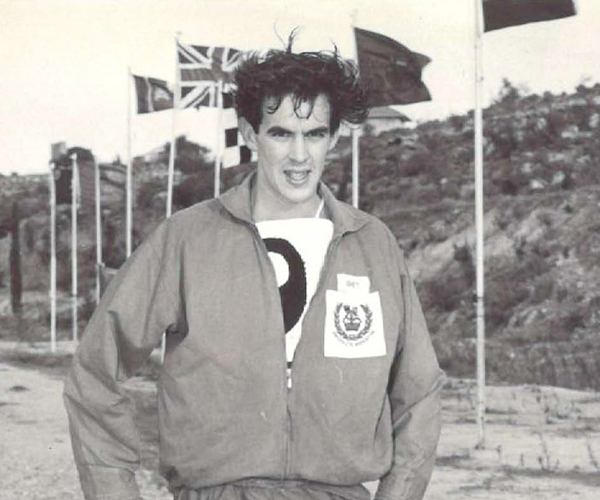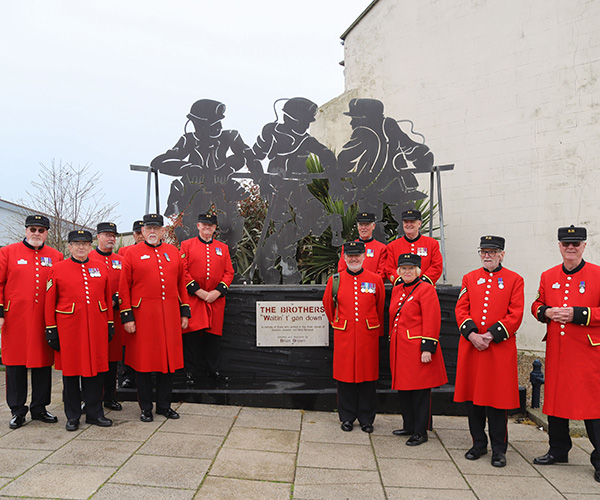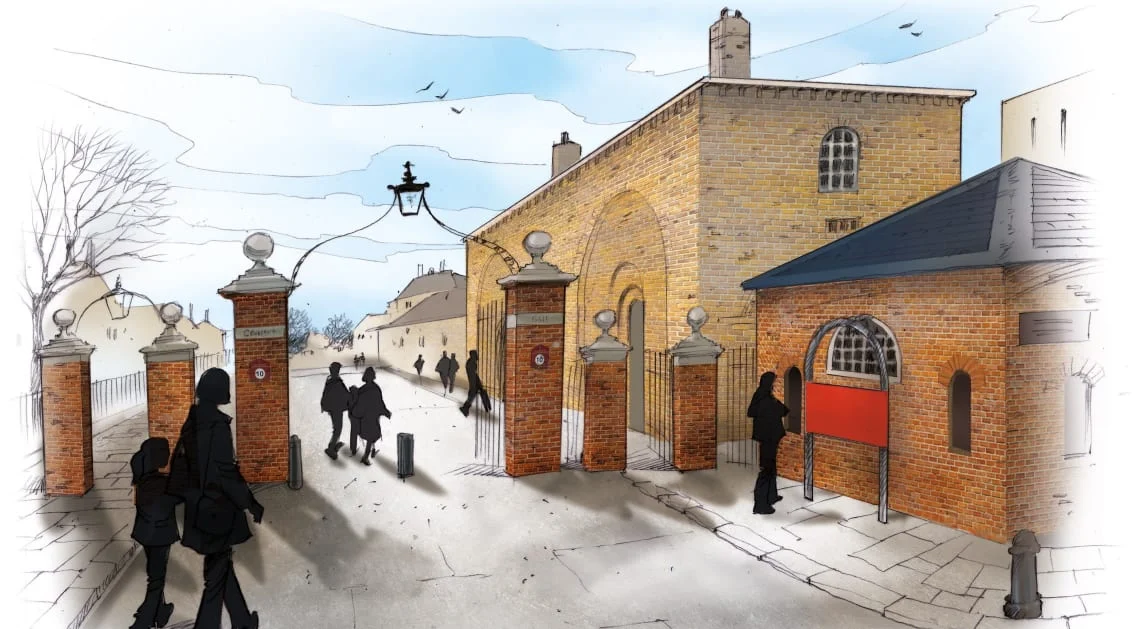
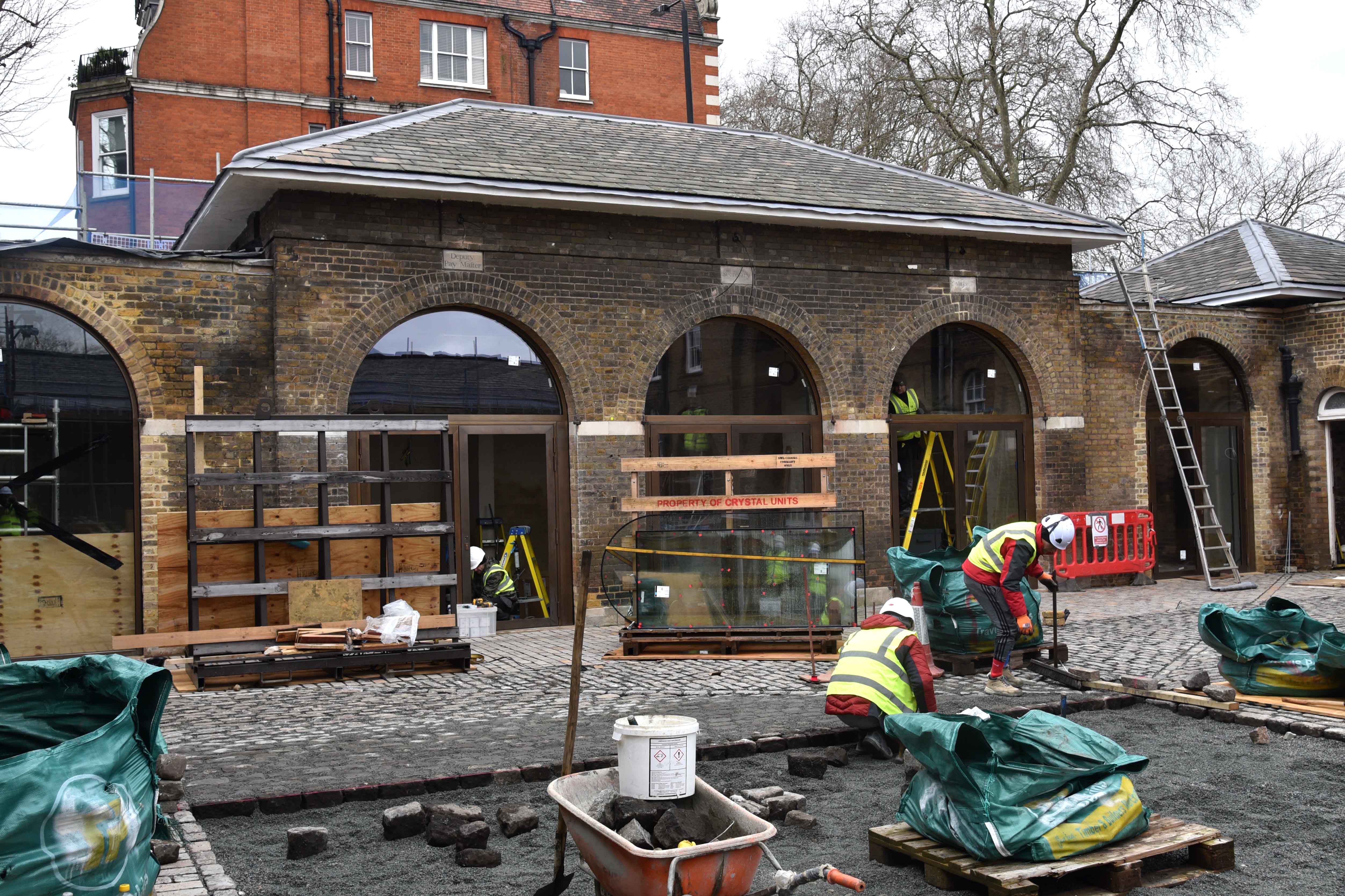
In our latest discussion with Heritage Architect, Laura Morgante, and Lead on the Soane Stable Yard, she shared insight on some of the key projects at the Royal Hospital.
Did you know much about the Stables before you started the project?
Actually, I did study the Soane Stables at the Royal Hospital when I was studying architecture. It was described as the first modern building. Soane was not copying classical architecture - he was reinventing it in a modern way. For example, the arches that we can see on West Road at the Royal Hospital, were a modern interpretation of the Roman aqueducts.
That means a lot to me that, after studying it, I'm now working on it. This is a fairly humble building, but it came to be from the vision of the best architect of his time.
Is there a key thing from the original building or a particular feature of Soane’s architecture that you would draw people’s attention to if you were taking them on a tour?
Yes. During the Second World War, the beautiful chimneys that were built on the roof were damaged and knocked down. We are rebuilding them, and they are really iconic elements of the architecture. We found the drawings and we are rebuilding them as they were before.
We are also putting in new lighting so there will be a sort of beacon from the road showing that there is something new at the Royal Hospital. A welcoming sign that something new is happening there.
I can also tell you that we found the original floors and we have been carefully collecting them. I'm not sure we are going to reuse them in the building because of accessibility, because they are not that flat, but we will certainly use them at the Royal Hospital.
Are there are any of the other buildings or projects you have worked on at the Royal Hospital that really stand out for you?
The work on the Wren Long Wards with their marvellous corridors that provide shared spaces to the Chelsea Pensioners, was very significant for me.
There were originally two corridors on each floor, and they had both been narrowed to extend the pensioners berths over time.
In short, we took out one of the corridors and used the space to give each Pensioner bigger bedrooms and ensuite bathrooms. Consequently, we were able to restore one corridor back to the original dimensions as Wren designed it.
When we started, they were just corridors and at the end of the project they were back as semi-public spaces, and you have that wonderful view of a 61 metre long corridor.
This project wasn’t my design - it was Peregrine Bryant and I was in the team and Project Architect for the construction phase.
And for Soane, the elevation on West Road with its imposing arches, really speaks to me. It's really great architecture. As I said it was in my history of architecture books, so it is architecture with capital A!
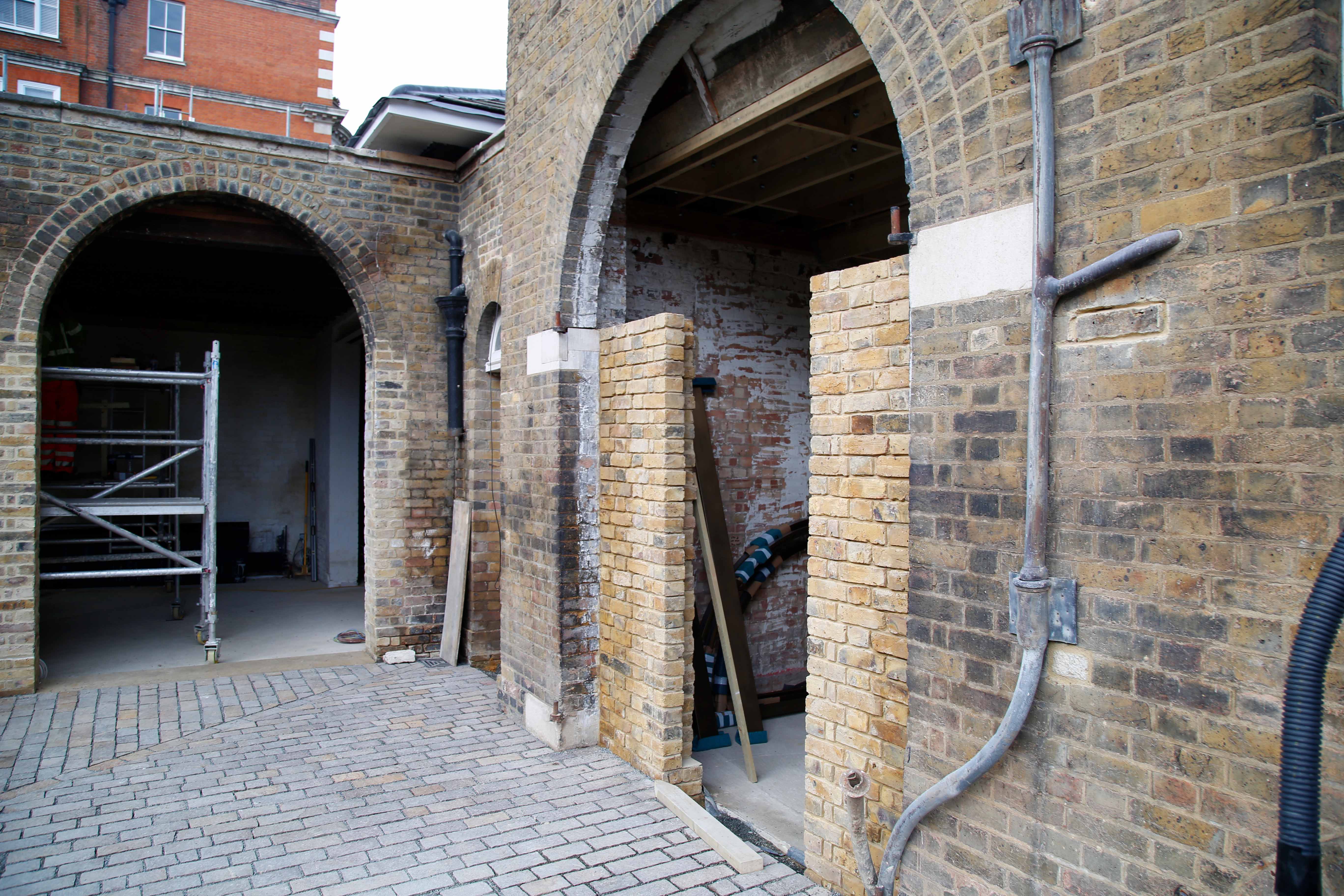
As work continues on the Soane Stable Yard, we caught up with Heritage Architect and Lead on the project, Laura Morgante. Here she talks about her experience of working on Conservation Projects...
What really appeals about working on these heritage buildings and projects?
I got my degree in Rome and heritage is a big part of our studies. Buildings that have a long history are like a puzzle and you have to put together all the pieces. Understanding what you are looking at, and the different phases and the different additions over time.
This building wasn’t a really complicated puzzle here, but we did find this kind of Wren / Soane collaboration across time, in the way that they used the same materials.
What about other projects you worked on in the past?
In Rome, I worked on a on a monastery, and it was an incredible puzzle. It was built on a Roman Villa and then it became a monastery and a big church. It is called Santi Quattro Coronati near The Colosseum.
We found an incredible room there where we know the Pope met Frederick the 2nd, and in there was a sort of calendar showing the seasons, animals, everyday lives on the wall. This was something from mediaeval times that had not been seen for nearly 1000 years.
So that was an incredible finding, and it is an amazing place that I will always remember with fondness. I love this job and I am always finding things that interest me in every building I work on.
So there's always something to discover that's really interesting?
There is always something that really gets my interest, and, as someone that loves conservation, when I see a building that has been forgotten for a while, you feel you have to redeem it. You have to put it back where it was when it was in use.
What’s your approach to preserving history more broadly in these sorts of projects?
I don’t want to restore things back to their “former glory”. I don't like to say that because I think when you are approaching a building that is 200 years old, you have to also respect the history that it went through. It has to have patina; it has to have a sign of the time that has passed.
Soanes Museum 67_5_5 front elevation - © Sir John Soane’s Museum, London
For example, I decided not to clean the building very much. That might be something that people will not agree with, but I think cleaning takes some of the history out of the place.
There is a sort of crust on the building that built up from the huge pollution in London over the years. Some of it has been cleaned but some is still there, so I think I am going to leave it there because it is part of the history of the building. Maybe some would say that's horrible, but it is just part of the building.
Think about people. I have wrinkles here and there when I smile. The wrinkles describe me. They make me. It took years for me to get them! As much as I like my photograph when I was eighteen, I think I lived for 57 years and there must be some sign of them left on me. I have to be proud of them somehow.
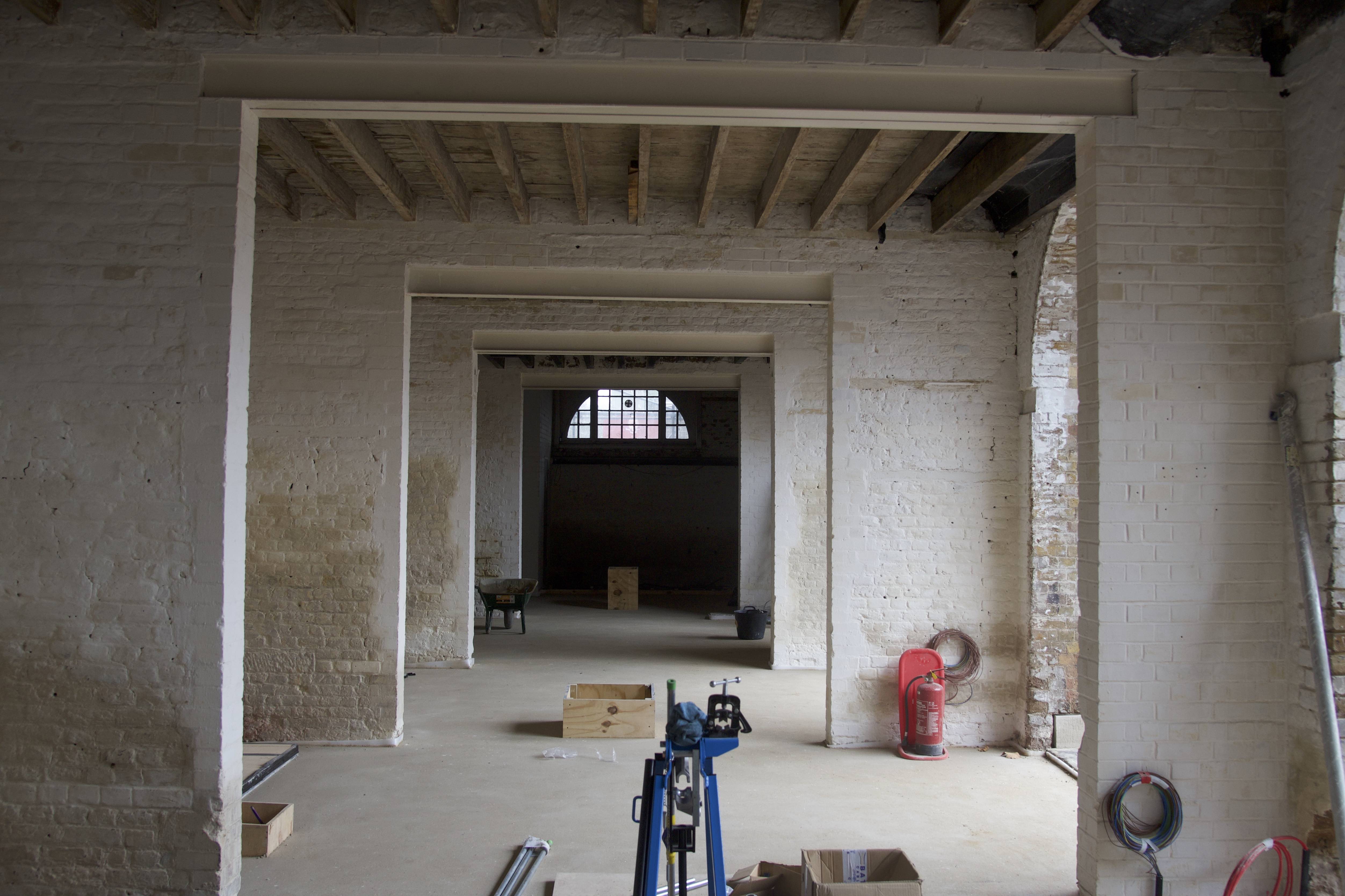
Architect Laura Morgante talks about what the team learned about Sir John Soane’s approaches to constructing the building and what we can learn from.
We know that Sir Christopher Wren had designed a stable yard which was demolished to make way for the Soane building. What was Soane’s approach to reusing and repurposing work that had been done when Wren built the original stables?
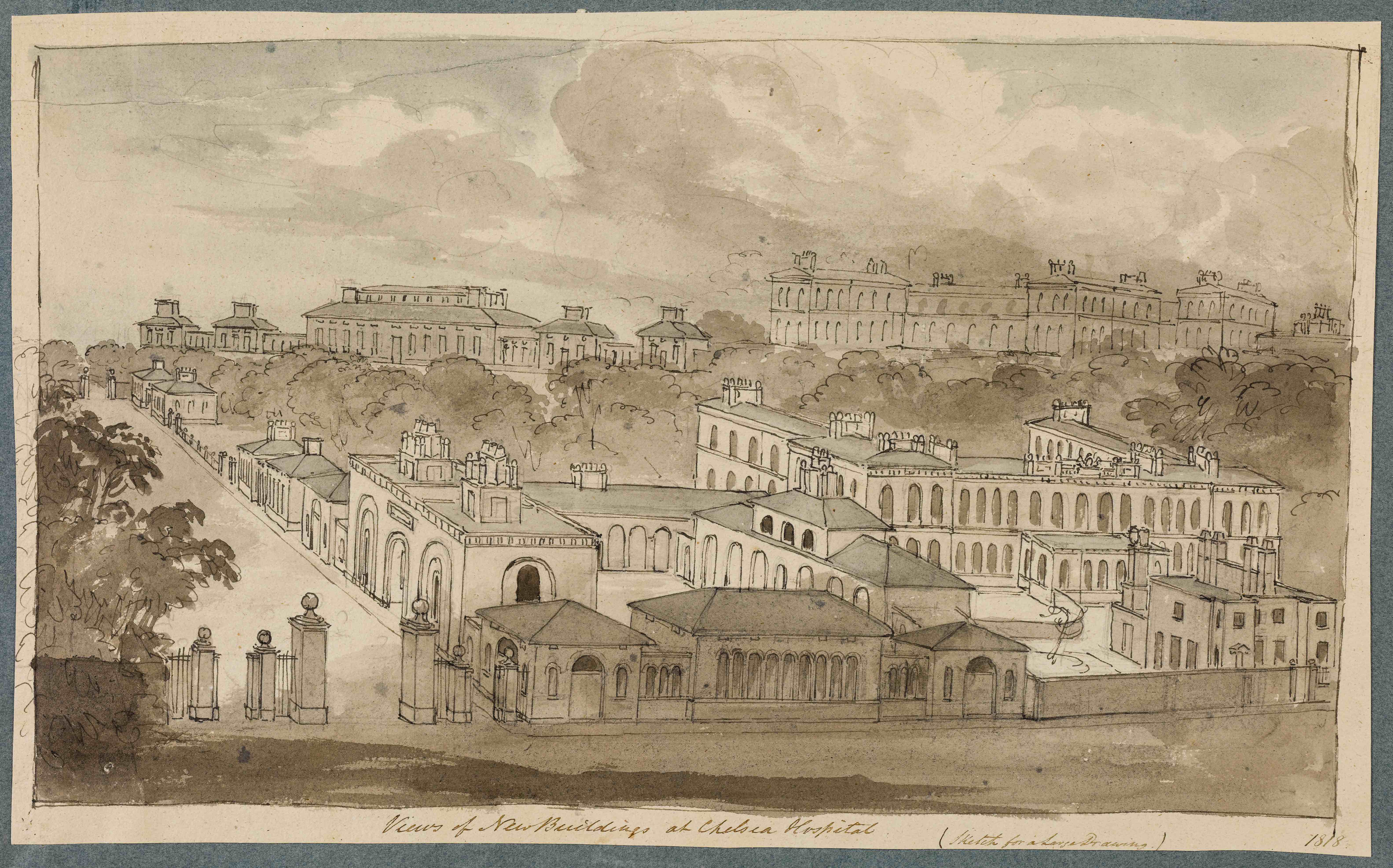
We discovered that Soane used a lot of the building materials that Wren used in the previous building. He reclaimed much of the timber structure that was used by Wren. We could see that there were elements of the building that had been used in a different way before, so it was amazing to see how much material was being kept and reclaimed in the new building.
They actually took a sort of environmental approach to the building, reusing as much as they could from the previous one. They dismantled it with care and then used materials again in a new way.
So, it was a really sustainable project?
Yes, Sir John Soane has a very distinctive way of designing, very modern somehow for the time. For example, he changed the skin of the building to these yellowy bricks, but he used a lot of the original red bricks on the inside.
What are the lessons we can learn now from Soane’s work on the stables?
There's been a lot of saving and reclaiming all through, and this was a discovery that made us think about what we should do to be more environmentally friendly. Not demolishing but dismantling with care and using what you have got for your new building.
So that’s a lesson to learn, and we have to think like that now. Of course, labour is more expensive than materials, so taking down with care means spending a lot of money for someone to do that brick by brick.
When you construct a building that has green credentials, the fact that you are recovering or reusing gives you points for having a green approach. But there will always be a cost attached to that.
There is a price to pay to be green, especially at the beginning but it will eventually become the norm. We are really at a turning point now, so we have to explore ways to be green and obviously there are things to learn from the past.
As work at the Soane Stable Yard progresses, we caught up with architect Laura Morgante from Peregrine Bryant to find out more about the plans for the redeveloped building and for an update on the works.
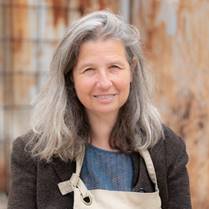
Here Laura talks about the key considerations and challenges that the architects and builders faced right from the early stages.
What was it like preparing and planning for the project?
It was easy to get approved and to get people on board because it was putting a beautiful building, designed by an incredible talented architect Sir John Soane, back into use. It had been left for a very long time and now it is going to be open to the public, so these are such positive things.
When we got to work on the building in earnest, we really studied it in detail. We studied the history of the place, how it developed from demolition of Wren’s stable which was in the same spot, and the very many modifications the building had over time.
What did you find when you got inside the building?
Once we got inside the building, I realised, as a conservation architect, that we needed to take out all the parts of the building that were added in the 60s and rediscover the nature of the building.
In the 60s, they added to it and they covered things up. They closed off a lot of the arches and they changed the colour of the windows, so they were all black. Now they’re white so we are going back to an image that is what Soane had in mind.
Do you have all the images of the building as it was, or did you have to work that out?
Yes, there are pictures. Soane was very good at recording what he did, and he created beautiful drawings. All the original drawings are at the Soane Museum, so we have those to work from. They are beautiful drawings, really beautiful.
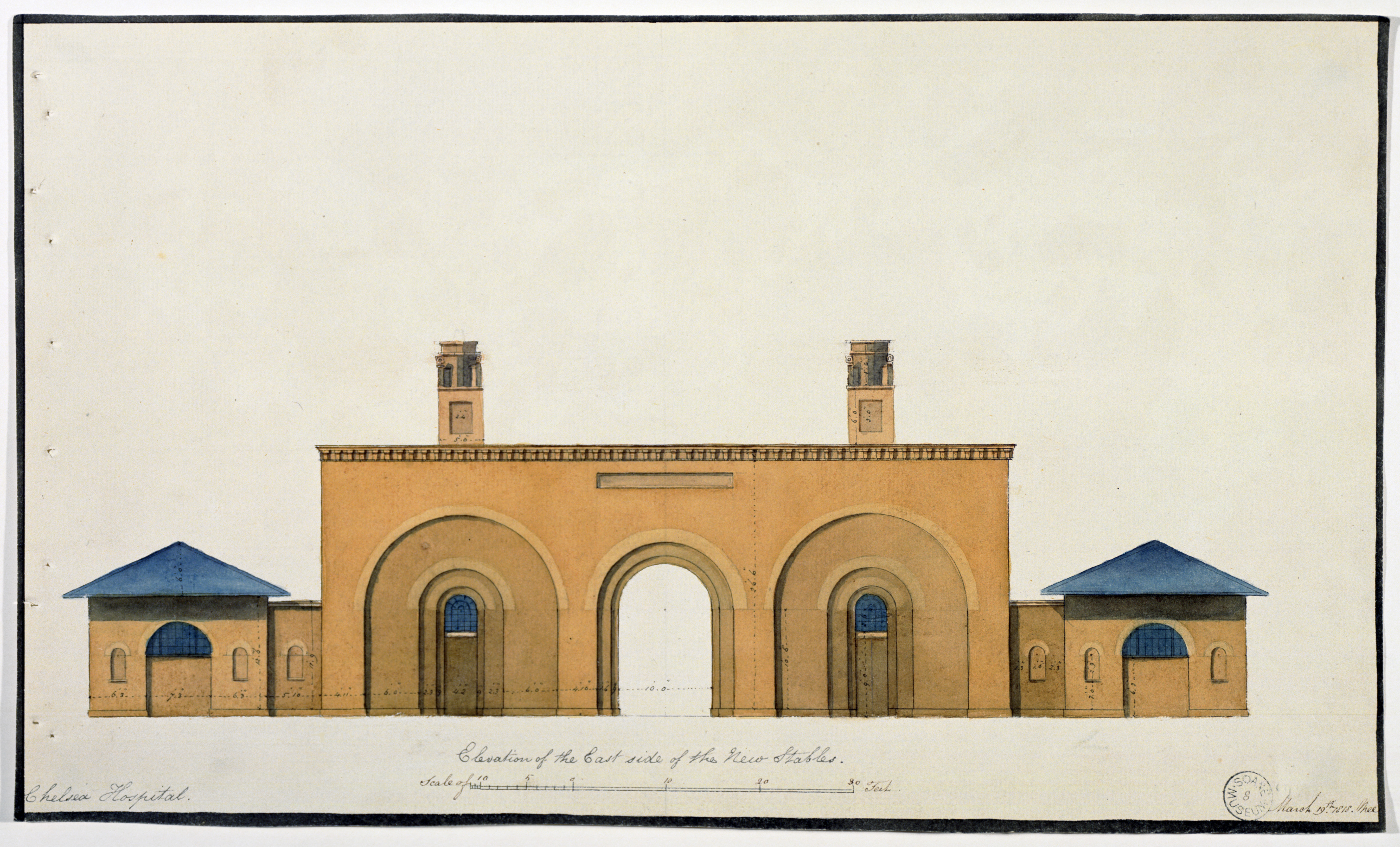
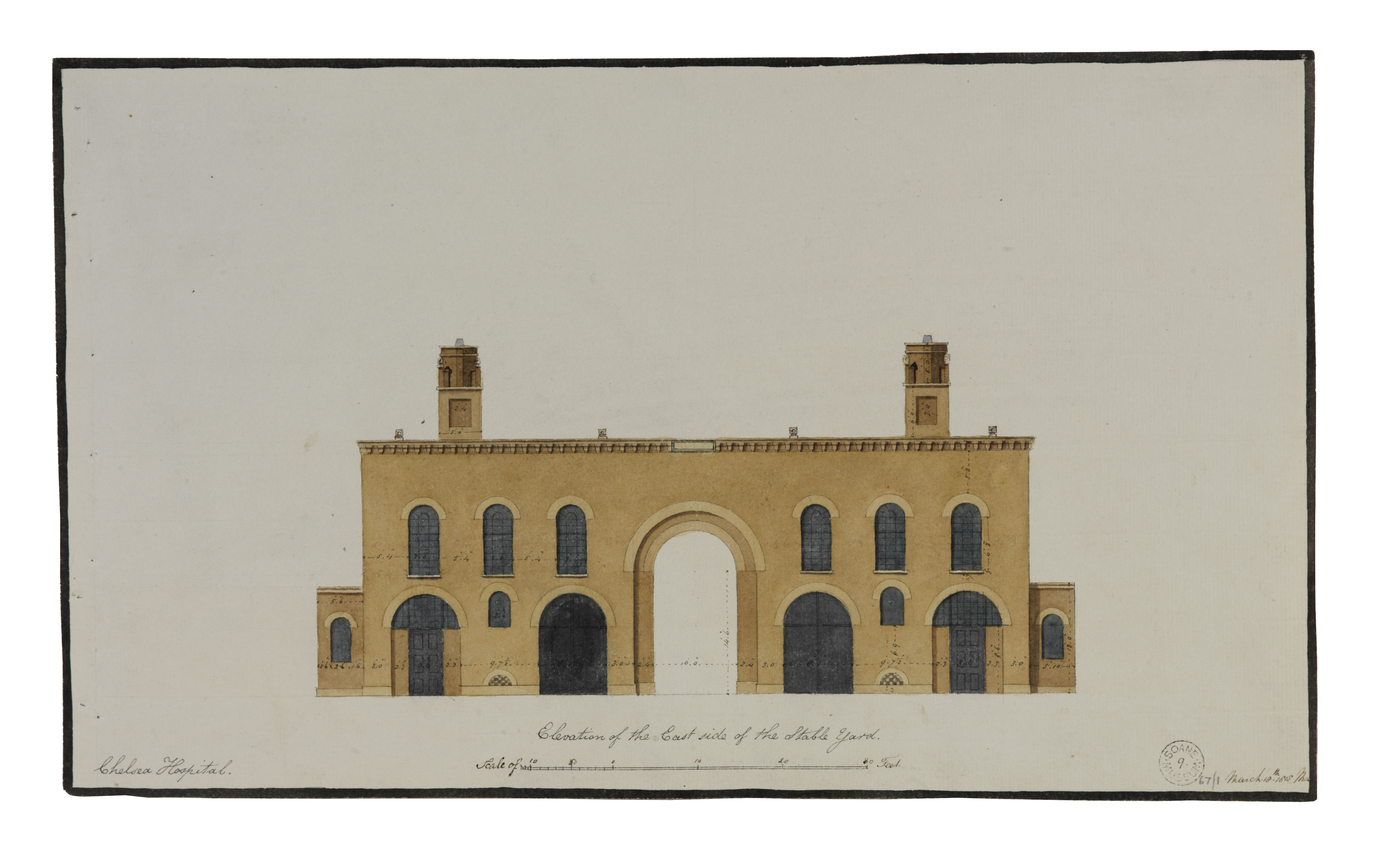
Were there any other challenges that stand out from this particular building?
The requirement to be accessible - the original sets or cobble stones in the floor were quite a difficult element to work with to make it fully accessible. We had to include some new sets, that are flatter.
But interestingly, the building sort of revealed itself to be much more accessible that we thought, because we found that in the 60s they put concrete on the original floors. In fact, a lot of the differences in levels between the inside and outside were made in the 60s, so we took that concrete away.
So, as we understood the building better, some of the challenges disappeared. In the end accessibility was easier that we thought, but only because we came to understand what happened in the building. We interrogated the building in the right way to find out more.
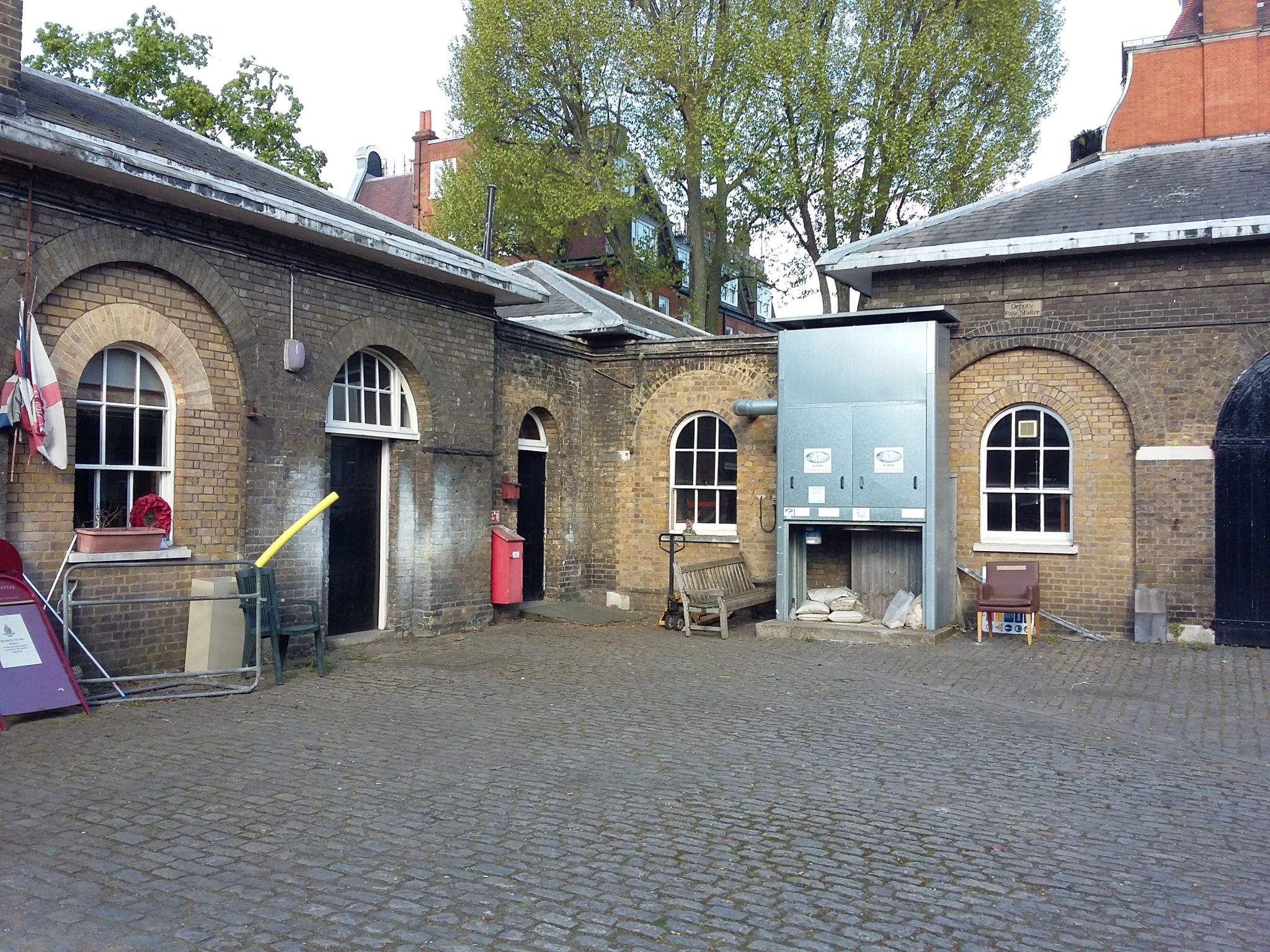
Were there other big surprises along the way?
Many actually. We found out before we started that many of the ceilings had asbestos in the panels. So, as part of the enabling work, we removed the ceilings and found that all the roof structures were still there.
Much of it was covered by a lovely lime wash finish, like a creamy grey colour. That lime wash on a pine structure is really nice, so these ceilings are going to be visible in the cafe. We had the drawings of all the big roof structures, but they were invisible until we removed the ceilings. It’s so nice that visitors will be able to see them when it's finished.

What other major milestones should we look out for in the next few months?
We have the new “limecrete” delivered soon which is a new base layer for the floors. Instead of concrete, this is a very green material. It is just lime and sand, and it is really breathable. It should reduce the moisture on the building walls, so this will be a very positive change for the building.
Then we are putting on lime floors. So instead of using cement on the floors we are using that. It is a floor that comes from Italy and was well known here in Roman times but has been a bit forgotten about.
What were the key things you needed to add to turn this into a modern visitor experience?
All the services are in and finalised. We need all these cables to run in conduits to provide data and Wi-Fi into the building and this is happening now.
These are going to help transform the place from a humble storage place to a high spec museum and exhibition space. There will be projection of images on walls and the services are going to enable the creation of immersive spaces. The Stable Yard buildings are going to be a really different building to experience.
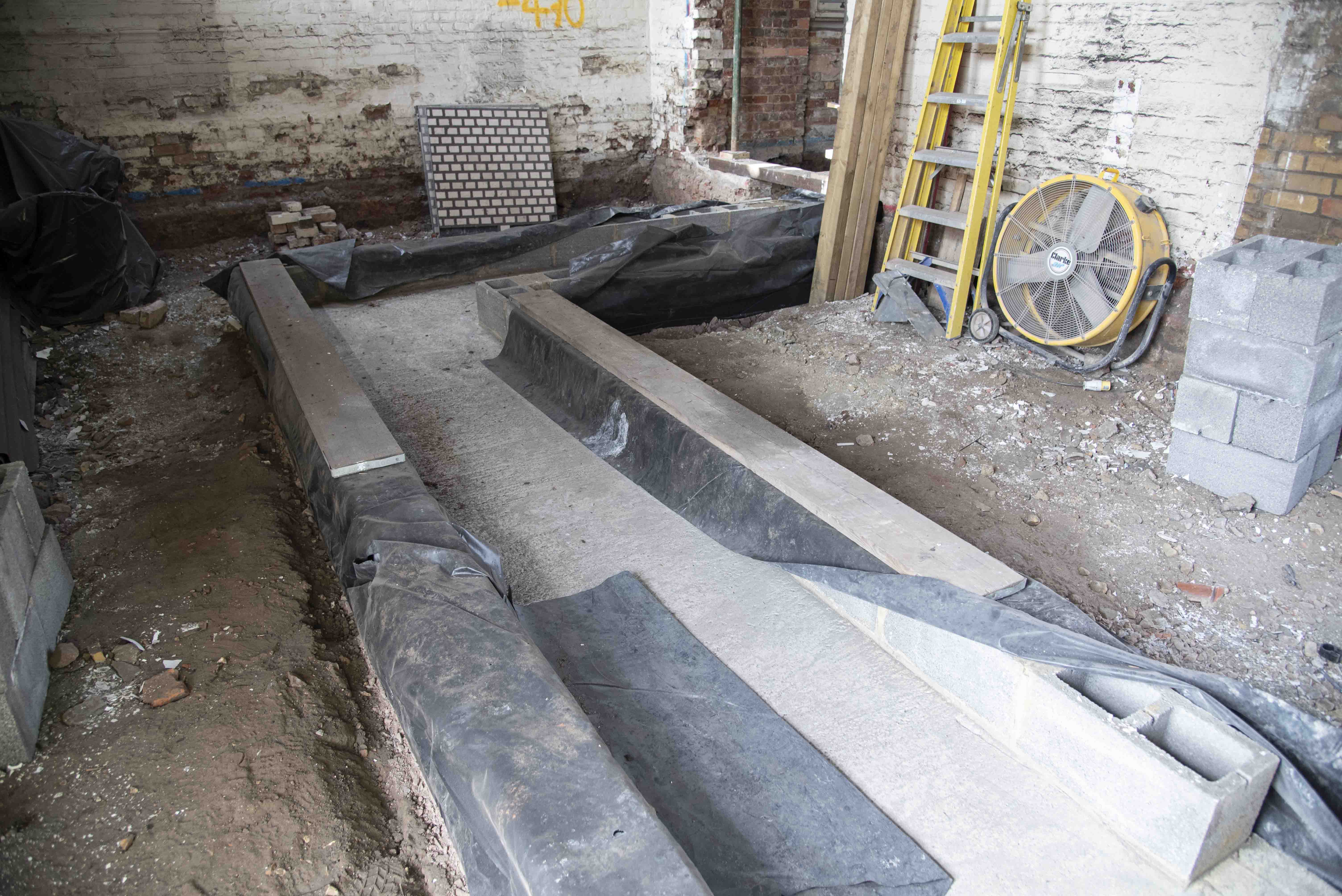
Update 11th August 2023:
The Royal Hospital celebrates a new lease of life for Sir John Soane’s historic stables.
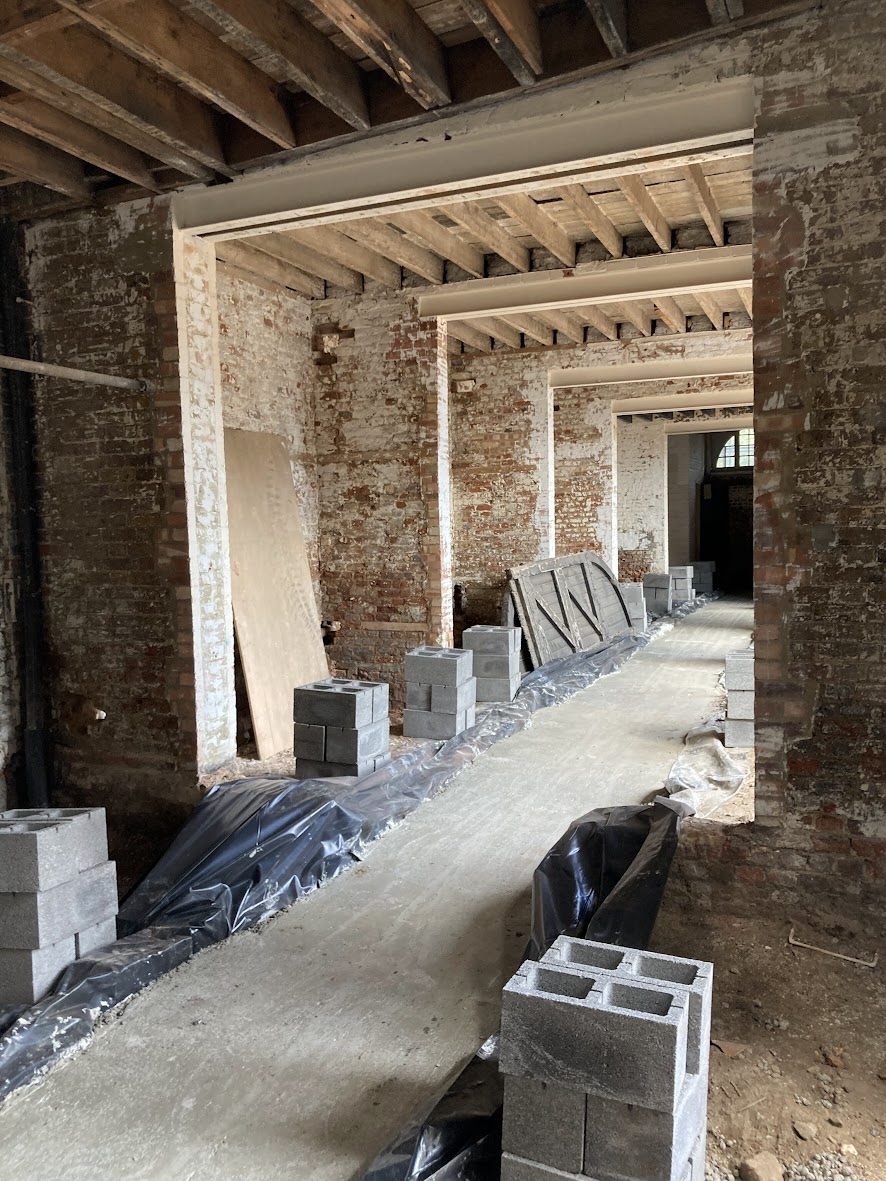
The installation of the block trench for services is ongoing in the café and permanent exhibition areas.
Demolition works have exposed damage caused by building work carried out in the 1960’s to the original fabric of the building; repairs to the carriage arches to rectify this have now started.
The reconstruction of Soane’s chimneys on the West and South ranges have been completed and are now awaiting now the code 10 lead pots to be cast in sand.
The demolitions have also revealed unexpected views of internal spaces, of special interest are the magnificent timber trusses constructed with wood structures dismantled from the larger 17th-century stables that preceded the current building, which were designed and built by Sir Christopher Wren.
Under layers of plaster, floral wallpaper has emerged on the stairs to first floor, happy testimonies of the lives of 19th-century ostlers, grooms and coachmen who resided here.
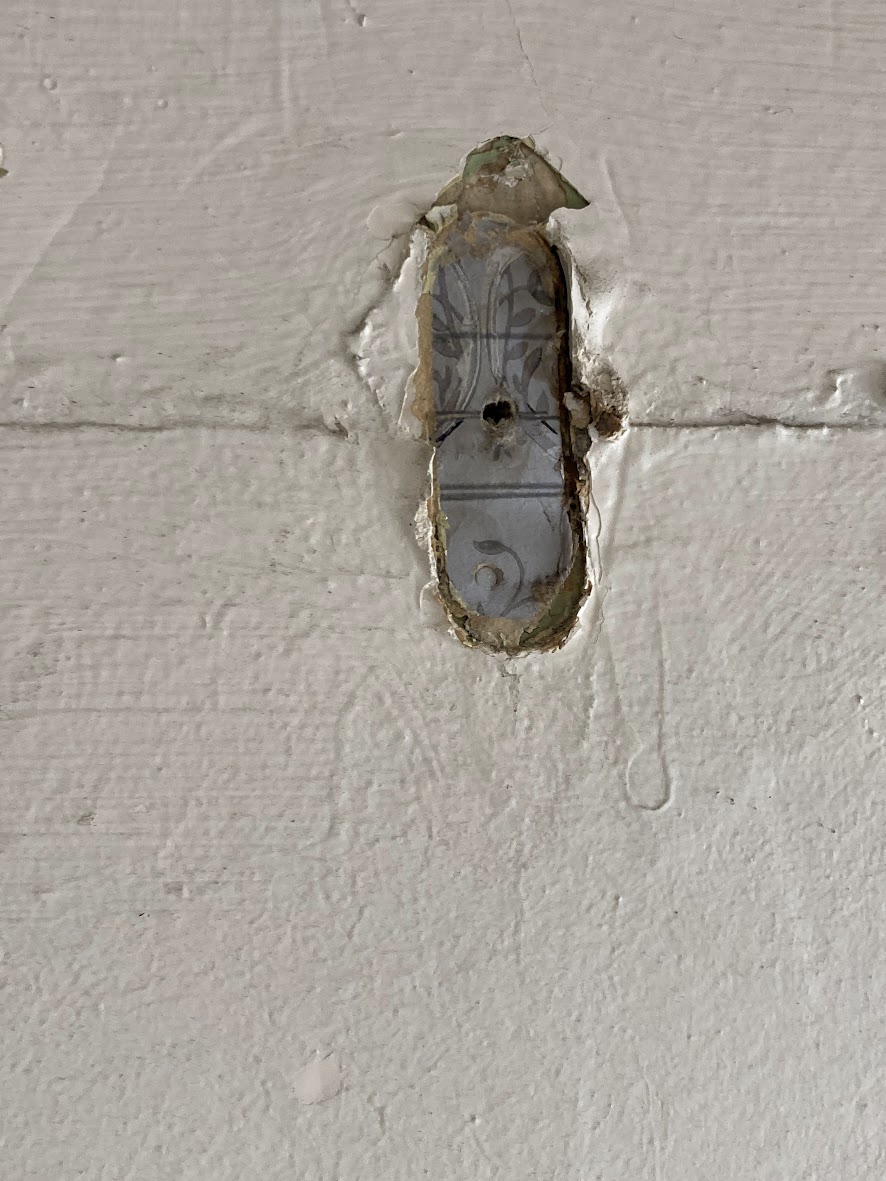

Laura Morgante
Director at PBA and Project Architect for the Soane Stables
An under-utilised asset at the Royal Hospital is now a step closer to realising its potential as a new Visitor Centre.
We are delighted to announce that the National Lottery Heritage Fund awarded a grant of £3,179,089 to the Royal Hospital Chelsea. This is our biggest single grant in almost fifteen years, an amount which will significantly help us to achieve our exciting new vision for the stables and grow our heritage offering.
The stables are in urgent need of conservation but hold enormous potential and the Royal Hospital will now embark on an ambitious capital project to rejuvenate the Grade II* listed space adjacent to Chelsea Gate. The project will focus on exploring outreach opportunities with the Armed Forces, academic and local communities, celebrating our rich heritage, and conserving the original fabric of the 19th-century building.
The project
This project is transformative for the Royal Hospital.
The new Visitor Centre in the Soane Stables will provide improved facilities for members of the public, scholars and Service personnel visiting the site, and an outreach and wellbeing programme for Chelsea Pensioners, non-resident veterans and other target audiences.
It will include:
- A permanent free exhibition, with new interpretation telling the story of the Royal Hospital Chelsea and the Chelsea Pensioners
- Audio visual presentations, maximising limited space with depth of content
- Outreach space (for wellbeing activities and programmes)
- Shop and Post Office (relocation and upgrade of existing facility, currently located on the site’s Eastern side)
- Café, with outdoor seating and event kitchen
- Courtyard for events and corporate hire
- Office space and storage (first floor)
- Toilets (including a Changing Places facility)
The wider Royal Hospital site will not be publicly accessible, except during special events, or as part of a charged-for, guided tour.
A new entrance on the western side of the building will provide direct access from the neighbouring National Army Museum.
Public programmes will engage new audiences through lectures, special events, and activities.
Work will commence on the project in April 2023, with an expected project completion date in the summer of 2024.
Still to come..
The Soane Stables will be open daily, seven days a week, from 9 am to 5pm, with direct access from Royal Hospital Road. Access to the new exhibition and displays will be free and casual visitors and local people will be able to drop into the café, the shop and Post Office.
The Royal Hospital enjoys a strong partnership with our neighbours, the National Army Museum and Chelsea Physic Garden. We believe this project will see us working more closely with the other cultural attractions on Royal Hospital Road, building on the success of the annual Chelsea History Festival, which we co-founded in 2019 and now attracts thousands of visitors each year from across London and further afield.
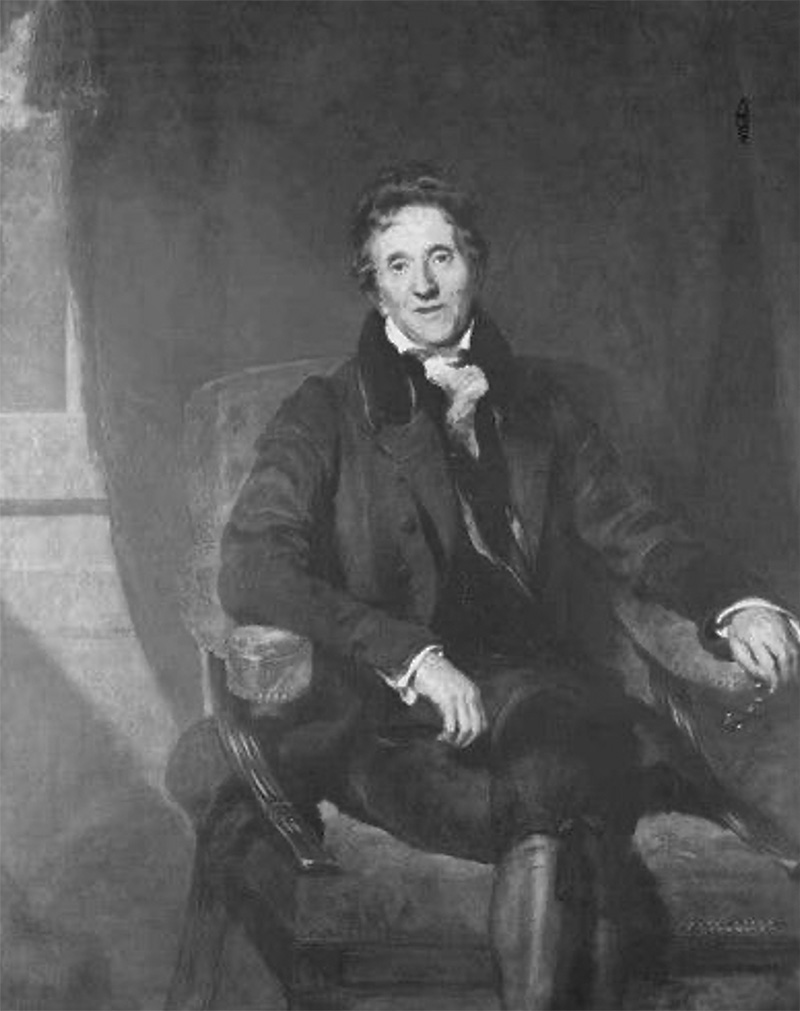
Sir John Soane followed a distinguished cohort of architectural titans, including Sir Christopher Wren, by holding the post of Clerk of Works at the Royal Hospital from 1807 until his death in 1837. During his tenure, he built a new Stable Yard on West Road (1814-1817), at a cost of £2,800. Fresh discoveries during this project have shown how Soane carefully reused some of the materials from Wren’s original, but by then, dilapidated stables, which were demolished to make way for Soane’s.
The Stables is a Grade II * listed building: only 5.8% of listed buildings in England fall within this category.
The Stables remained in use until the 1960’s when it was converted into workshops and offices and new extensions were built to the south. These interventions and the resulting lack of use has led the condition of the Stables to dramatically deteriorate in recent years. Now, it has once again an important part to play in the next chapter of the Royal Hospital’s long history.
Want to get involved?
There will be lots of opportunities to get involved in this project and learn more about our history. These will range from volunteer opportunities, to hard hat tours with our Conservation Architect, to a project podcast.
If you have any questions, or would like to discover more about this project, contact:

Assistant Director (Audience Engagement)
kate.ainley-marr@chelsea-pensioners.org.uk
020 7881 5241
